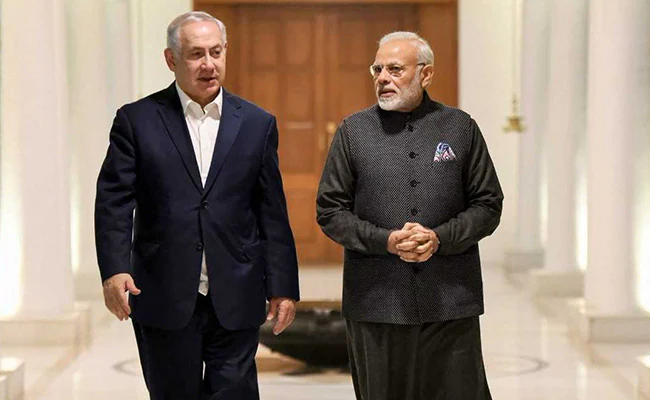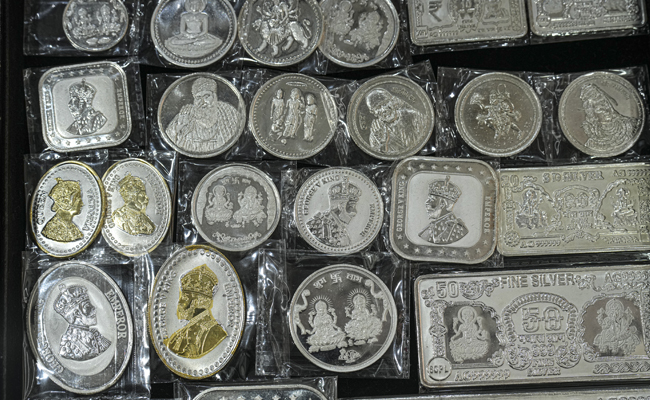New Delhi, Dec 11: The Centre on Monday defended the change in the National Medical Commission's logo to feature Dhanwantari -- the physicians of the Gods in Hindu mythology -- instead of a secular emblem, saying it was part of India's heritage and everyone must feel proud of it.
When the TMC's Santanu Sen raised the issue of the change in the logo through a Zero Hour mention in the Rajya Sabha, Health Minister Mansukh Mandaviya said Dhanwantari is a symbol of Indian medical science.
"(It was) already a part of the (Commission's) logo and just some colour has been added and nothing more," he said.
"This is India's heritage. I feel we should feel proud (about it)," he added.
The minister said the logo is designed by taking inspiration from the country's heritage.
"This is a symbol of medical science ... someone who had done so much research in medical science. We have used the photo with no other intention."
The Medical Council of India (MCI) logo was adopted in 1934 after the Indian Medical Council Act, 1933, was enacted.
The law defined medicine as "modern scientific medicine and includes surgery and obstetrics" and the logo used was based on the international symbol for medicine -- the staff of Aesclepius, the Greek god of medicine and healing.
The logo also featured a snake wound around the staff.
While there has been no official announcement of a change in the Commission's logo, a black and white logo with the depiction of Dhanwantari at the centre reportedly appeared in December 2022. The colourised version appeared a couple of months later.
Raising the issue through a Zero Hour mention, Sen demanded the restoration of the National Medical Commission's previous logo.
He said the Indian Medical Council Act of 1956 was repealed in 2020 despite objections from different corners of society and the medical fraternity.
"The National Medical Commission came into force from 25th September 2020, repealing the 64-year-old Indian Medical Council Act, 1956," he added.
Earlier it was termed as "western medicine", then it became "medicine" and finally it was termed as "modern medicine", Sen said and added that the logo of modern medicine is the staff of Aesclepius.
"And there was no need and there was no permissible condition, so far as the National Medical Commission is concerned, that this logo can be changed. But, unfortunately, we have seen in the recent past, I don't know (if it is) because of government instruction or by the National Medical Commission itself, they have changed the logo and they have brought a photograph of Dhanwantari in the logo," Sen said.
The "change of logo was absolutely not needed. It symbolises one particular religion," he added.
The National Medical Commission, he said, regulates medical curriculum and sanctions new medical colleges.
"Its function is not to promote any particular religion. Even the Ayush department did not change its logo but the National Medical Commission has," the TMC MP said.
"It is against the basic oath which doctors take after passing MBBS. They take the oath that we will treat each and every patient irrespective of their caste, creed or religion. We are not bound to treat one particular religion," he said.
The change of logo, he said, was against the basic essence of the Indian Constitution which, through Article 25 and 26 after the 42nd Amendment in 1976, states that India is a secular country.
"And we should promote the dovetailing of religion," Sen said and demanded that the National Medical Commission immediately restore the previous logo that did not symbolise any particular religion.
Let the Truth be known. If you read VB and like VB, please be a VB Supporter and Help us deliver the Truth to one and all.
New Delhi (PTI): The IT Ministry is examining the response and submissions made by X following a government directive to crack down on misuse of artificial intelligence chatbot Grok by users for the creation of sexualised and obscene images of women and minors, sources said.
X had been given extended time until Wednesday, 5 PM to submit a detailed Action Taken Report to the ministry, after a stern warning was issued to the Elon Musk-led social media platform over indecent and sexually-explicit content being generated through misuse of AI-based services like 'Grok' and other tools.
Sources told PTI that X has submitted their response, and it is under examination.
The details of X's submission were, however, not immediately known.
On Sunday, X's 'Safety' handle said it takes action against illegal content on its platform, including Child Sexual Abuse Material (CSAM), by removing it, permanently suspending accounts, and working with local governments and law enforcement as necessary.
"Anyone using or prompting Grok to make illegal content will suffer the same consequences as if they upload illegal content," X had said, reiterating the stance taken by Musk on illegal content.
ALSO READ: Israeli PM Netanyahu calls PM Modi; briefs on Gaza Peace Plan status
On January 2, the IT Ministry pulled up X and directed it to immediately remove all vulgar, obscene and unlawful content, especially generated by Grok (X's built-in artificial intelligence interface) or face action under the law.
In the directive on Friday, the ministry asked the US-based social media firm to submit a detailed action taken report (ATR) within 72 hours, spelling out specific technical and organisational measures adopted or proposed in relation to the Grok application; the role and oversight exercised by the Chief Compliance Officer; actions taken against offending content, users and accounts; as well as mechanisms to ensure compliance with the mandatory reporting requirement under Indian laws.
The IT Ministry, in the ultimatum issued, noted that Grok AI, developed by X and integrated on the platform, is being misused by users to create fake accounts to host, generate, publish or share obscene images or videos of women in a derogatory or vulgar manner.
"Importantly, this is not limited to creation of fake accounts but also targets women who host or publish their images or videos, through prompts, image manipulation and synthetic outputs," the ministry said, asserting that such conduct reflects a serious failure of platform-level safeguards and enforcement mechanisms, and amounts to gross misuse of artificial intelligence (AI) technologies in violation of stipulated laws.
The government made it clear to X that compliance with the IT Act and rules is not optional, and that the statutory exemptions under section 79 of the IT Act (which deals with safe harbour and immunity from liability for online intermediaries) are conditional upon strict observance of due diligence obligations.
"Accordingly, you are advised to strictly desist from the hosting, displaying, uploading, publication, transmission, storage, sharing of any content on your platform that is obscene, pornographic, vulgar, indecent, sexually explicit, paedophilic, or otherwise prohibited under any law...," the ministry said.
The government warned X in clear terms that any failure to observe due diligence obligations shall result in the loss of the exemption from liability under section 79 of the IT Act, and that the platform will also be liable for consequential action under other laws, including the IT Act and Bharatiya Nyaya Sanhita.
It asked X to enforce user terms of service and AI usage restrictions, including ensuring strong deterrent measures such as suspension, termination and other enforcement actions against violating users and accounts.
X has also been asked to remove or disable access "without delay" to all content already generated or disseminated in violation of applicable laws, in strict compliance with the timelines prescribed under the IT Rules, 2021, without, as such, vitiating the evidence.
Besides India, the platform has drawn flak in the UK and Malaysia too. Ofcom, the UK's independent communications regulator, in a recent social media post, said: "We are aware of serious concerns raised about a feature on Grok on X that produces undressed images of people and sexualised images of children".
"We have made urgent contact with X and xAI to understand what steps they have taken to comply with their legal duties to protect users in the UK. Based on their response, we will undertake a swift assessment to determine whether there are potential compliance issues that warrant investigation," Ofcom said.





